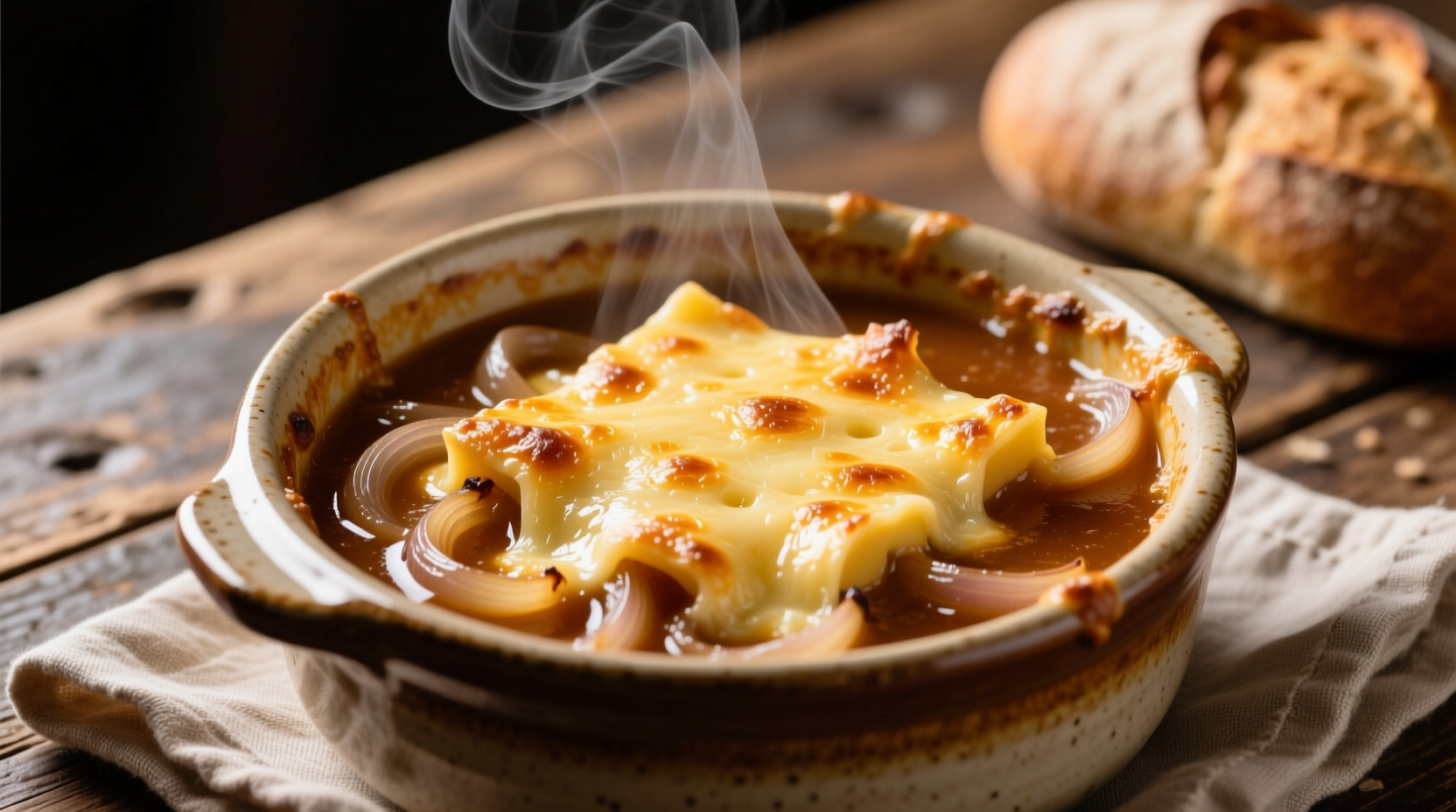There's something undeniably comforting about a steaming bowl of French onion soup, especially when that golden-brown cheese crust gives way to reveal the savory broth beneath. At Applebee's, this classic has been perfected for consistent, approachable dining—no fancy techniques required, just straightforward comfort in every spoonful.
The Evolution of a Classic American Bistro Staple
French onion soup traces its origins to ancient Rome, but the version we recognize today emerged in 18th century Paris as a humble worker's meal. The modern iteration gained international fame after Julia Child introduced it to American home cooks in the 1960s. Applebee's adaptation entered the scene during the casual dining boom of the 1980s, offering a simplified yet satisfying interpretation that resonated with mainstream American palates.
| Traditional French Onion Soup | Applebee's Version |
|---|---|
| Prepared with veal or beef stock | Uses standardized beef broth base |
| Onions caramelized 45-60 minutes | Streamlined caramelization process |
| Baguette slices with Gruyère cheese | Toasted bread with Swiss/provolone blend |
| Individual preparation | Batch preparation for consistency |
What Makes Applebee's Version Distinctive
While purists might raise eyebrows at deviations from the classic, Applebee's approach serves a specific purpose: delivering reliable flavor in a high-volume setting. Their version features a carefully balanced broth that achieves depth without requiring hours of reduction. The cheese blend—typically Swiss and provolone rather than traditional Gruyère—creates a milder, more universally appealing flavor profile that melts consistently across thousands of locations.
According to culinary industry analysis from National Restaurant News, chain adaptations of classic dishes like this succeed by maintaining recognizable elements while optimizing for operational efficiency—a balance Applebee's has mastered with their French onion soup.
Nutritional Profile and Ingredients
Understanding what's in your meal matters. A standard serving of Applebee's French onion soup (1 cup) contains approximately:
- 240 calories
- 12g fat (7g saturated)
- 1,190mg sodium
- 24g carbohydrates
- 9g protein
The ingredient list typically includes onions, beef broth, modified food starch, butter, sherry wine, Worcestershire sauce, and the signature cheese blend. While not identical to traditional preparation, these components work together to create that familiar, comforting flavor profile customers expect.

Recreating the Experience at Home
You don't need professional kitchen equipment to capture the essence of Applebee's French onion soup. The key lies in proper onion caramelization and broth enhancement:
- Caramelize slowly: Cook sliced yellow onions over medium-low heat for 30-40 minutes until deeply golden
- Boost the broth: Use quality beef broth enhanced with a splash of sherry and Worcestershire sauce
- Cheese selection: Combine Swiss and provolone for that signature melt and flavor
- Bread choice: Use sturdy French bread slices that can withstand the broth without disintegrating
When Applebee's Version Shines
This adaptation works particularly well in casual dining contexts where consistency and approachability matter most. Food anthropology research from Society for the Anthropology of Food and Nutrition indicates that chain restaurant adaptations of ethnic dishes serve an important cultural function—they introduce consumers to new flavor profiles in accessible ways, often serving as gateway experiences to more authentic versions.
For weeknight dinners or when feeding a crowd, Applebee's approach offers practical advantages. The simplified preparation maintains the soul-warming qualities of French onion soup without requiring the time commitment of traditional methods. It's comfort food executed with purpose—not culinary perfection, but reliable satisfaction.
Perfect Pairing Suggestions
At Applebee's, this soup typically serves as either a starter or part of their classic combo meals. For home preparation, consider these pairings that honor the soup's bistro heritage while acknowledging its Americanized character:
- A crisp Caesar salad for contrast
- Grilled chicken sandwich for a complete meal
- Simple green salad with vinaigrette
- Crusty bread for dipping
Frequently Asked Questions
Does Applebee's French onion soup contain alcohol?
Yes, Applebee's French onion soup contains sherry wine as part of its flavor profile, though the alcohol content cooks off during preparation, leaving primarily the distinctive flavor.
Is Applebee's French onion soup gluten-free?
No, Applebee's French onion soup contains modified food starch and is prepared with bread topping, making it unsuitable for gluten-free diets. Always check current allergen information as recipes may change.
How does Applebee's French onion soup compare to traditional versions?
Applebee's version simplifies traditional preparation with standardized ingredients and streamlined cooking methods. It uses a Swiss-provolone cheese blend instead of Gruyère and features a more consistent, milder flavor profile designed for broad appeal rather than authentic French complexity.
Can you get Applebee's French onion soup without the cheese topping?
Yes, most Applebee's locations can accommodate requests to modify or omit the cheese topping upon request, though this will change the signature presentation and flavor profile of the dish.











 浙公网安备
33010002000092号
浙公网安备
33010002000092号 浙B2-20120091-4
浙B2-20120091-4